For Britta Rael Kfir, balance is an important part of not only her life but also of those she trains, too.
Her training philosophy centers around keeping things equal, like balancing out tougher workouts such as strength and conditioning work with those that bring more peace and calm, like yoga or walks in nature.
“In my experience, it’s really easy for humans to go from one extreme to the other extreme – it’s just part of living in our universe. There’s a lot of extremes,” Britta says. “As an athlete, if you focused solely on strength and conditioning or solely on cardio, eventually it would blow you out. So, yoga represents a counterbalance that allows me to be grounded, quiet, connected, and retain energy to utilize it when I need to. You can’t have the appreciation for a sunrise if you don’t experience dark after sunset. They’re really vital to one another.”
Britta has been in the fitness industry for over a decade. She’s also been a life-long lover of activities in nature, enjoying hikes with her family and riding her bike from a young age.
She’s excited about all that 2024 is bringing to the table, including exploring some new types of training and perhaps a new race or two!
Read on to learn more about Britta and how she stays fit for all times!
***

Tell me a little bit about yourself and how fitness and sports came into your life.
I didn’t grow up doing traditional team sports. There was a gap between me and my brothers of about 10 years, so they played lacrosse and football in high school, but I grew up roaming around as a young child. I was really into running through the neighborhood doing adventurous stuff.
As I got older and more confident, I started riding bikes. I would go for miles and be gone for a few hours at a time. I’d tell my parents I was going to go to the reservoir and back – and this was pre-cellphones. I knew where to go, and they felt confident that I was capable.
So I was really into adventure sports more than anything. I liked to snowboard. I would go backpacking with my dad. We did a lot of hiking and rock climbing growing up, more mountain-type sports … That had a really big influence on me.
As far as fitness, I was definitely not raised with the idea that exercise was really important for long-term health. It wasn’t really until I was in college that I had a roommate who had depression – she would go at night to run laps around the track and listen to music. One night, she said you should come with me sometime; it’s kinda fun, and you might surprise yourself. It’s not that hard to run.
I had never been a runner, so I started running around the track with her at night. My goal was to finish one loop, which is a quarter mile. It was so hard! But it was the first time I had listened to music while exercising, and that was a really cool thing for me. It catapulted my interest in fitness from fun and adventure to something that really asked dedication and intensity of me. I just kept running. From there, I found my way into a gym and taught myself how to lift weights, and I eventually joined the intramural flag football team – that was so fun!
I didn’t realize you could have so much fun in sports in an organized way!

You are a fitness trainer and strength coach. Why did you choose that career path?
I teach full-time performance coaching, teaching strength and conditioning, yoga, recovery, and mobility work, as well as rehabilitation. I started in college right around the time that I met my husband. I took a yoga class that was inside the cafeteria at my college. It wasn’t a big thing back then – this was 2006. I was intrigued by it. It just felt really good, and a bunch of my friends were into it. Later when I met my husband, he was a dedicated yogi at that point, so I started learning yoga, Asana, and meditation, and ended up deciding to learn more. So my first exposure to teaching a physical practice was through yoga.
I completed my basic yoga teacher training and was really moved by it. I spent some time in India. I went deep into the yoga world and began teaching full-time. I really changed the orientation of my profession to be movement and healing arts. It wasn’t until I started getting into acrobatics that I realized, oh, I actually need some strength! I’m gonna start lifting people up over my head.
So I started training a little bit more, and then I just got really curious. I’m definitely a learner. I like to consume information that’s educational more than anything. So I took my personal trainer certification and started incorporating a little bit more strength work into my yoga offerings. And all of that was married within this world of acrobatics, which fortunately had a huge emphasis on massage, mobility, and self-care.
It’s been a really cool trifecta. I don’t feel like I’ve ever been into one extreme. It’s always had this blend of healing arts, massage, yoga, outdoor adventure – not very linear. I feel like I have a unique set of skills that gives me so many tools for helping other people discover how to use their bodies differently and how to push themselves or heal themselves. For me, I’m constantly learning about my own body. It’s like my experiment. It feels like a really good place to be, and it’s always something that’s needed in the world. Professionally, I don’t feel like I’m ever going to be lacking an opportunity for work!
What do you like most about your job and training others?
I am such a people person! I love connecting with so many different types of people. I didn’t think about myself this way for many years – but I’m actually a good problem-solver or an engineer in some ways. I don’t identify as being good at math or science, but I’m very visual, and I can see problems and solutions in the human body and in these different planes of movement. I think that’s what I love the most is that I get to interact with people and also kind of step back and look at them like a problem or a puzzle that I get to figure out: What tool could I apply in this context to get a different outcome, or how can I help them find what helps them improve their pain or their performance. So, it’s always exciting. Within those constraints, there’s a lot of color to play with.

What are the benefits of strength and conditioning training?
If you have a strong physical body, you have a strong emotional and mental body. You have so much more capacity to operate in the world with greater ease. I think that’s what I saw in a lot of people in my family or that I had interactions with at a younger age. They experienced challenge not just in their physicality but limitations that translated to “I can’t live the way I want to live because I have pain” or “I can’t do that because I’m old.”
I think the No. 1 thing that has always inspired me is helping people understand that strength is a vital part of being human. It doesn’t translate to being a bodybuilder. It just translates to having a greater capacity to function.
Conditioning is what my dad might call “good for what ails ‘ya.” It’s the hard effort we do, whether it’s cycling training, or sprinting, or just being able to carry heavy stuff. I think that builds grit and really can improve your quality of life as well. It’s important important for health and longevity. We have to be able to use this beautiful machine of our body and make sure that it still functions really well. In order to function, you have to test it often. You have to get the gears rolling and make sure that everything’s operating smoothly.
So I think that’s the biggest, most important part: longevity and capacity. From the performance side, if you are in any way, shape, or form doing recreational sports – and this is inclusive to any skill level – strength development is such a huge part of improving your performance, from a non-injury or preventative standpoint to a competitive level. I think it’s a pretty big factor for anybody for any activity.

How do you balance strength with yoga and other recovery-focused activities in your life?
In my experience, it’s really easy for humans to go from one extreme to the other extreme. And that may not even be just humans – I think it’s just part of living in our universe. There’s a lot of extremes.
The sympathetic nervous system is one extreme where everything’s ramped up. You’re excited, you’re terrified, you’re full of energy, or you’re in the trauma response, that fight or flight. It’s a necessity for existence. When you look at the spectrum of sun and moon, light and dark – those are also extremes. And they’re all necessary for how we exist on this planet in this cosmic universe. You can’t have one without the other.
As an athlete, if you focused solely on strength and conditioning or solely on cardio, eventually it would blow you out. You lose steam or suffer an injury. So yoga, for me represents a counterbalance that allows me to be grounded, quiet, connected, and retain energy in order to utilize it when I need to. You can’t have the appreciation for a sunrise if you don’t experience dark after sunset. They’re really vital to one another. It would just be sunny all the time – hot, and bright, and that would just be our reality.
They’re really vital, complementary practices. I don’t think they can exist without the other. When you look at breathwork or practices like yin yoga – even just the awareness practice of being completely present with the sensations and the stimuli that are around at all times – you start to pay attention and increase your ability to respond and react to certain situations. Breathing as a recovery practice is an anchor. Practices like yoga, non-sleep deep rest and breathwork help us digest and sleep better and be more relaxed. We have more ebbs and flows.

You also enjoy cycling! Tell us more about that and your goals for 2024.
Cycling has been a joy for me for so long. Someone mentioned this the other day. We were talking about “cycling,” and I laughed because I always grew up just “riding” my bike. There’s a really child-like state for me. I’ve never considered myself a cyclist, I’m just riding bikes. Cycling is an opportunity to reconnect with that little girl in me who’s having a great time riding my bike and feeling really free. I can go fast; it’s so fun. I feel the wind on my back. There’s nothing like that. It’s so different than any other sport.
So in 2024, what is cycling for me? Maybe it’s embracing a bit more focused training in new ways, learning how to anticipate the grade of a hill and prepare for that, or treat cycling more like a sport, but also not getting lost in that. Trying to ride for the sake of riding. Going around the neighborhood, taking friends on bike rides because we can and it’s fun. It feels so good! It puts you on a cloud, and that’s such a powerful way to train. It’s not really hard on the body in a lot of ways, but it’s challenging. I think that’s why I like it.

I wanted to ask you about the fitness space because as a woman, sometimes strength training and sports can feel a bit exclusive, though it is improving. How have you noticed this change over the years?
From a coaching standpoint now, what I see mostly is the tendency for women to discount how powerful they are as humans. Your anatomy as a female-born person is like, wow, you can grow and birth a child. There is such power and strength in that. And yet because of centuries of power dynamics, we’ve had this imbalanced archetype of strength being related to big, bulky muscles. There’s a disconnect culturally and socially that says women are not strong or don't belong in those environments.
In the training facility where I work, there are so many really strong, capable women. How cool is that? I think it’s just beautiful to see more and more gym owners, coaches, and global culture celebrating women. You are powerful and strong whether you have bodybuilder muscles or not. Let's celebrate that you have capacity and eliminate the need to define or limit how that capacity can be expressed. The more that we do that, the more it welcomes more people, women, men, other gendered people, anybody – you can come in and feel strong and capable.
There’s still this social paradigm that women’s bodies should look a certain way. That’s just not true. There are millions of unique bodies. I think it’s just important that we all continue to have the conversation that strength is not a byproduct of an aesthetic. It’s a product of your inner capacity. You can be thin and hella strong. You can have a bigger body and be hella strong. And anywhere in between – you are strong and capable. I like seeing more and more of that happening and trying to encourage that.
From a yoga perspective, it’s fun to see more men or those who identify as male coming into the practice. I think that goes back to what we were talking about with the importance of these two systems – strength and yoga, yin and yang, power and grace. I think every unique human being has the potential for and is in some way designed to carry both of those characteristics or traits.
This is not about gender or sexuality, but the qualities of feminine and masculine. One’s ability to channel strength, fire, and power, and their ability to channel softness, quiet, and inner groundedness. Those are complementary aspects that are in all of us. I think that’s really powerful when we have places and people coming together from all of those different traits, their genders, their personalities, their practices. That’s where we’re gonna get into some really cool territory where we get a team of what I call “Graceful Savages”: People who are extremely capable and competent in their physicality and also soft and capable in their ability to heal and their ability to connect and be grounded.
If you look at a lot of ancient cultures – traditional Indian or Asian martial arts, and yogis are included in that – the most fierce hierarchies of warriors were trained simultaneously as fiercely in healing arts. They come from the same root. It’s all the same capacity, but we’ve turned the volume up on the strength and power side, or we’ve turned the volume up on the grace, flow, fluidity, and softness side.
They’re both required for a balanced practitioner. I just like to remember that because I’m like, I don’t care if you can chop a brick in half. But can you equally meet your partner in an opportunity to provide a healing touch with as much awareness, softness, and attention as possible? That’s my definition of a super athlete.

How did you find Athletic Brewing non-alcoholic beer and the Athletic Brewing Ambassador program?
Two of my teachers, very good friends who are professional adventure-racing athletes, introduced me to Athletic Brewing, and the thought of having a good-tasting NA beer really caught my eye. I was like, “Man, that tastes so good!” And it just seemed like there was such a tight-knit team of people representing this non-alcoholic beer.
I love that kind of stuff! So I blindly applied. I’ve always had my eye out for companies, products, and brands that align with philosophies and values important to me. I still consume alcohol, but having our products so readily available with so many varieties to choose from has really helped me with my own health and fitness performance. And our ambassador community is extremely special. Everyone is so passionate, so inspiring, so fun to connect with!
What are some of your proudest achievements?
A big one that I just celebrated was my 10-year wedding anniversary. That’s a huge achievement and just a joy.
Another one is having been an educator in movement and fitness for 15 years and having such a variety of rich experiences. I’m proud of myself for sticking with it and working hard and going with all these flows and different iterations of what that has looked like over the years.
I’ve pushed myself more athletically in the last 5 years than I ever have. I’ve done 50-mile bike races. I’ve done a couple of little sprint triathlons that never thought I could ever do, and that was just because someone was like hey do you want to do it with me? I’ve done 10-20 mile-a-day backpacking trips, which has been really fun, not knowing where I’m sleeping that night.
Strength-wise fitness is easy because it’s such an observable metric that you can track. But I’ve set some pretty good personal records in deadlift and bodyweight things, like, I can do 3 pullups now. That feels so cool, especially as a woman.
In the last year or two, I've done a lot more interior work in understanding my deficits and gifts as a communicator, and now that I’m in my late 30s, I’m stepping into a different air of ownership of how I communicate, how I relate to people, how I express myself. It’s changed and improved a lot, both in my language and in my energy. I can have hard conversations with more ease. I can have conversations with more types of people and types of topics. My ability to feel and articulate more efficiently and effectively has improved a lot. That’s huge for me.
And honestly, another one is just being alive as a human in 2024. That’s a big achievement for all of us.

Do you have any bucket list races, events, or achievements you'd like to attain one day?
I don’t have a really clear list, but my slightly obscure list is that I’d like to do an adventure race that is at least a couple of days, if not longer. I’ve never really done multisport events! It’d be fun to have 2 or 3 days of some crazy quagmire of different activities. It’s something I think about all the time that gets me so excited and petrified! I have all of the right friends who want me to come and do it. I just haven’t said yes yet. I’m ready to put that at the top of the bucket list.
Races … I don't know. I’m getting more curious about longer-distance races. I’d love to do a full century (on a bike), and I think that’s really feasible this year.
What is your favorite recovery food?
Lately, it’s been delicious pan-roasted chicken and kabocha squash with ghee and cinnamon. I just had that last night after a conditioning class, and I was like, all I want is that sweet starch! You can eat it with your fingers and pull the chicken off the bone. That’s great in terms of whole foods.
On the regular, though, I have a lot of smoothies. You can pack in so many antioxidants, fruits, vegetables, fat, protein, and flavor and have it pretty much anywhere you go. No matter what your sport or where you are, if you have a shaker bottle or blender, you can make a good recovery drink.
What do you like to do on rest days?
It really depends. I ask this question to my clients a lot: What are you resting from, and how do you need to be recovering? I used to do a lot of yoga and a lot of stuff that was bendy and stretchy. I started using strength training as my recovery tool for all the stretchy stuff that I did. My body was so open and flexible. I needed more tension to bring that back in.
If you’re someone who sits at your computer all day, your recovery should not be sitting on the couch watching a show. It should probably be getting a hard strength training in or taking a walk.
For me, I do a lot of lifting, cycling, coaching and moving around, so I definitely am at a different stage now where my recovery is often a nice walk and doing some soft tissue work. Spending time near the ground in a very chill way has been very restorative for me. It puts me into a position that’s not sitting, so I still get some mobility. Slacklining is very fluid and meditative. It puts me right into that flow state and is easy on the joints.
Oh, and sleeping! Eating! Laying in the sun at the beach. Gardening. These are all very restorative practices.

What gets you up and out of bed every day?
The first answer that came to my mind is literally the dawn. From a young age, I’ve always loved the sunrise. I’ve always been easy to wake up. And I don't know, there's just something about the dawn, the start of the day, that lights me up. I’m excited as a human to be alive and stoked to see what the day has. I’m always peeking out of the blinds. I’ve always wanted to live in a place that has no blinds so I can just see the dawn first. It’s not a very deep, metaphorical thing that motivates me. Literally, I love being alive, being awake, seeing what’s out there.
What does living a life #FitForAllTimes mean to you?
This is probably part of the big reason why I’m doing what I’m doing and who I am today. I lost my mom to cancer when I was 18. I watched her be limited in her physical body and mental understanding of what she was capable of or what she could do.
That was a really big motivator for me to find ways to be fit for all times, both to avoid disease or limitations from a physical sense, but also to step into that physicality as a way to see what more I could achieve and the potential I could unlock for myself and others.
Fit for all times really comes down to that essence of, are you living in your physical body in a way that expands all the other dimensions of life? It has nothing to do with how fast you can run or how strong your muscles are. But are you capable of living the life that you want to live? My mom had that drive, but she somehow was restricted in her physicality, and that was a huge barrier for her.
So it’s kind of a personal mission of mine just to help as many people as I can – help them see being physically capable is a really big gateway to being humanly capable.
You’re a superhuman just by existing. Don’t forget that. Tap into that and be fit for all times.
If you're interested in joining the Athletic Brewing Ambassador program, visit our Ambassador Community Page and sign up to be notified when applications open!
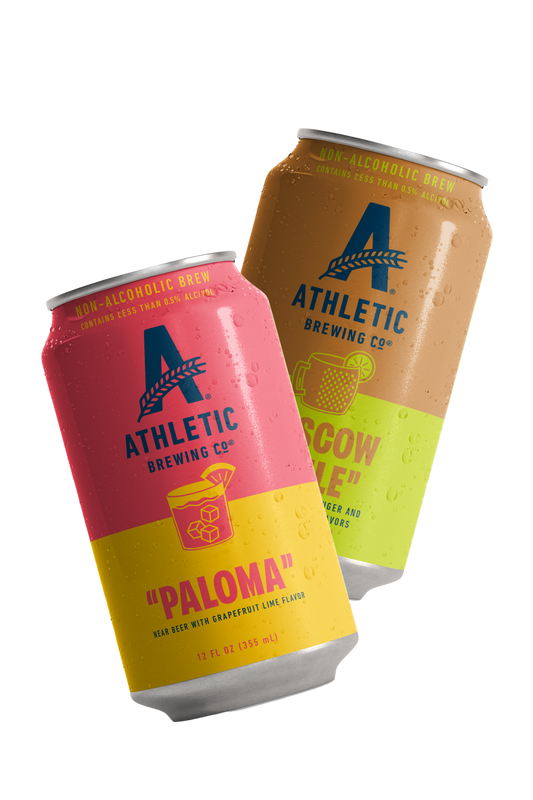
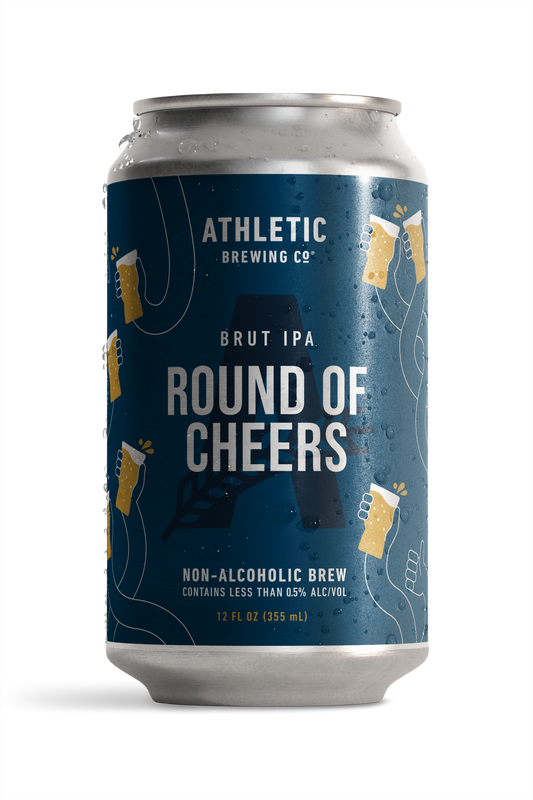




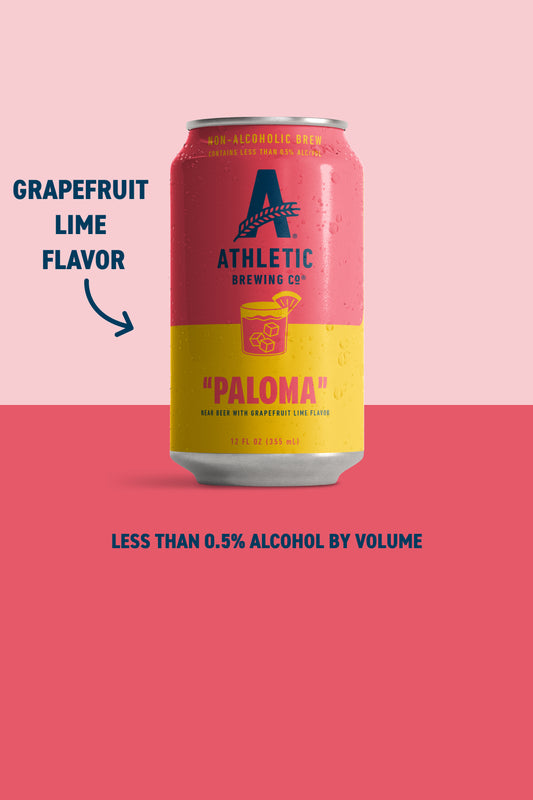


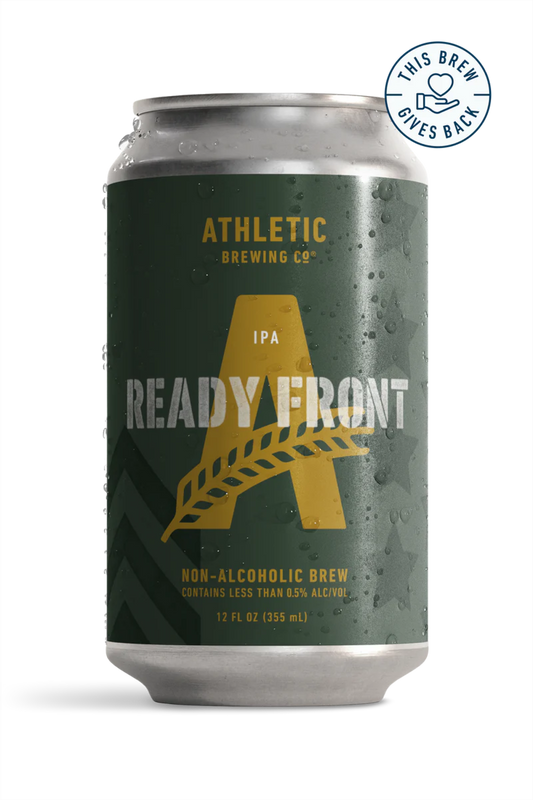
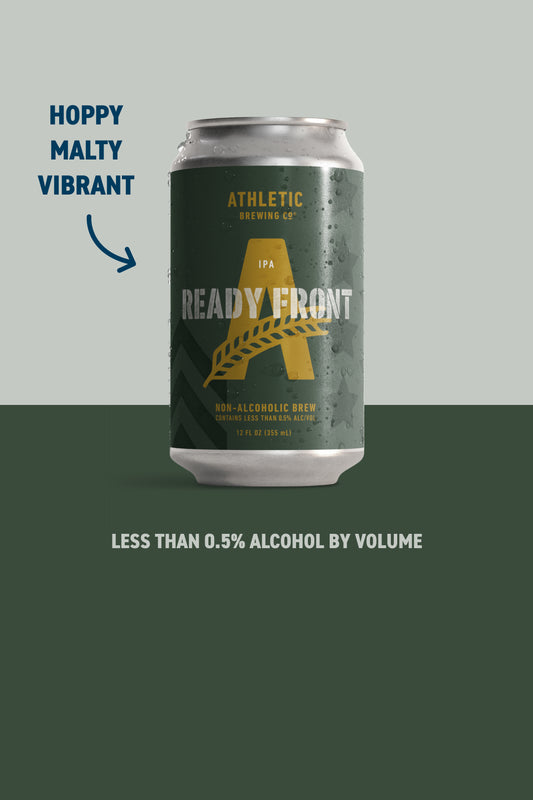
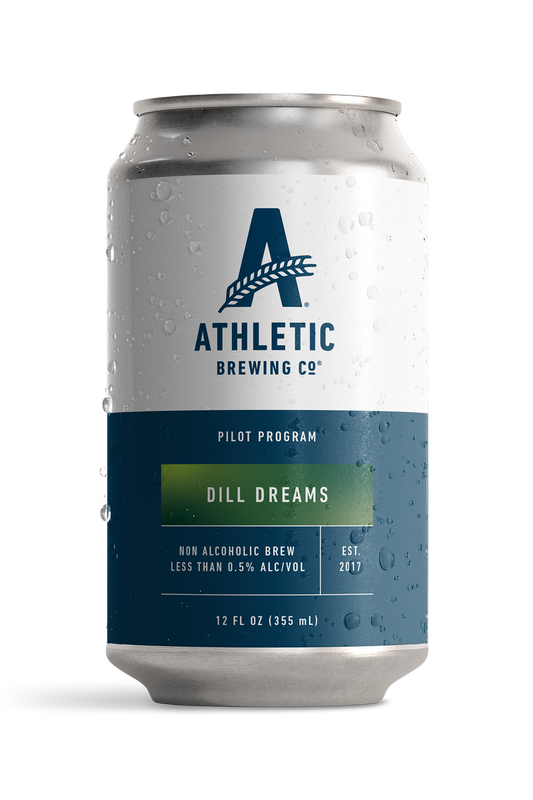

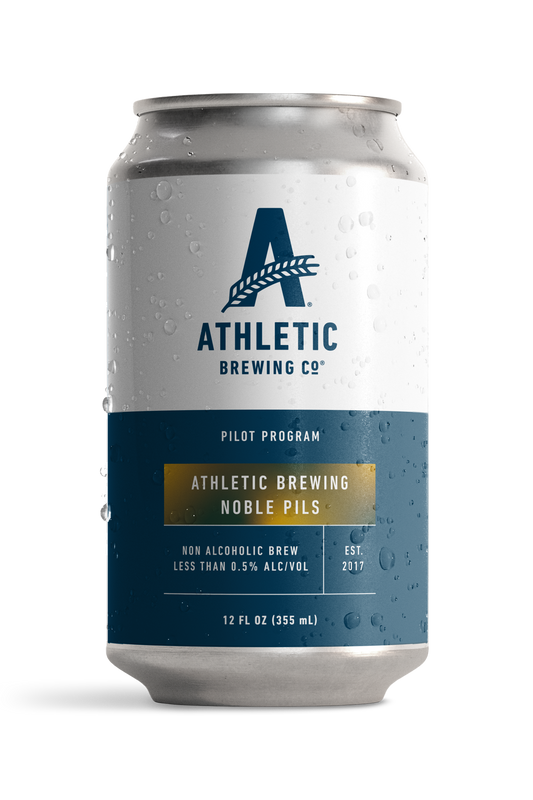
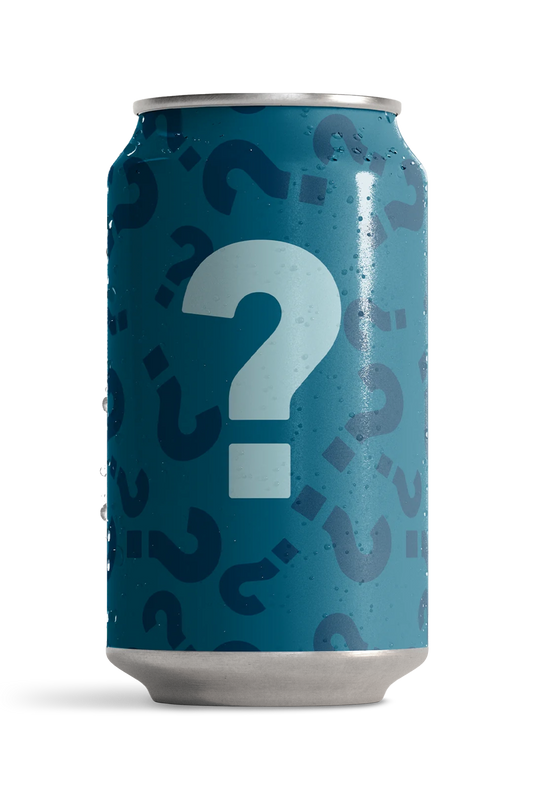
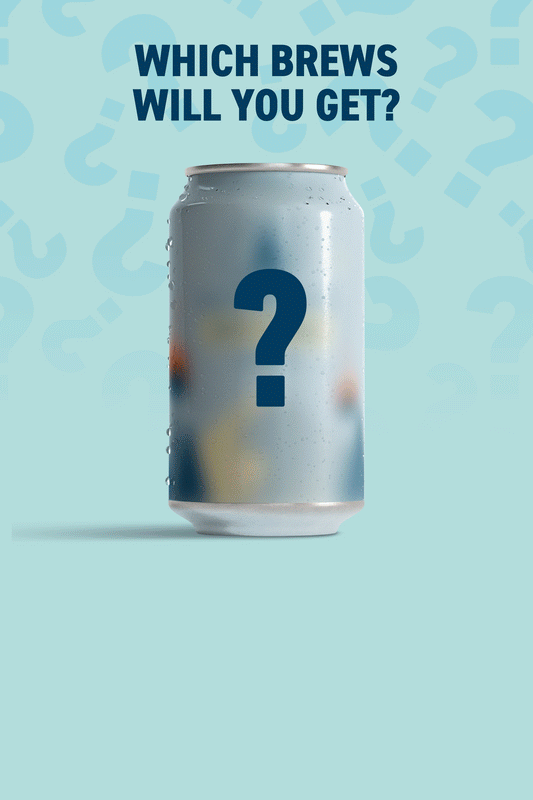









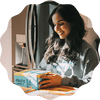


 Your Privacy Choices
Your Privacy Choices











